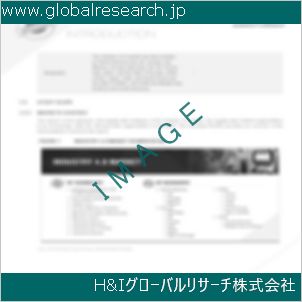Table of Contents
1 Industry Overview of M-Xylene
1.1 Definition and Specifications of M-Xylene
1.1.1 Definition of M-Xylene
1.1.2 Specifications of M-Xylene
1.2 Classification of M-Xylene
1.3 Applications of M-Xylene
1.3.1 Nuclear Application
1.3.2 Non-Nuclear Application
1.4 Industry Chain Structure of M-Xylene
1.5 Industry Overview and Major Regions Status of M-Xylene
1.5.1 Industry Overview of M-Xylene
1.5.2 Global Major Regions Status of M-Xylene
1.6 Industry Policy Analysis of M-Xylene
1.7 Industry News Analysis of M-Xylene
2 Manufacturing Cost Structure Analysis of M-Xylene
2.1 Raw Material Suppliers and Price Analysis of M-Xylene
2.2 Equipment Suppliers and Price Analysis of M-Xylene
2.3 Labor Cost Analysis of M-Xylene
2.4 Other Costs Analysis of M-Xylene
2.5 Manufacturing Cost Structure Analysis of M-Xylene
2.6 Manufacturing Process Analysis of M-Xylene
3 Technical Data and Manufacturing Plants Analysis of M-Xylene
3.1 Capacity and Commercial Production Date of Global M-Xylene Major Manufacturers in 2023
3.2 Manufacturing Plants Distribution of Global M-Xylene Major Manufacturers in 2023
3.3 R&D Status and Technology Source of Global M-Xylene Major Manufacturers in 2023
3.4 Raw Materials Sources Analysis of Global M-Xylene Major Manufacturers in 2023
4 Capacity, Production and Revenue Analysis of M-Xylene by Regions, Types and Manufacturers
4.1 Global Capacity, Production and Revenue of M-Xylene by Regions 2019-2024
4.2 Global and Major Regions Capacity, Production, Revenue and Growth Rate of M-Xylene 2019-2024
4.3 Global Capacity, Production and Revenue of M-Xylene by Types 2019-2024
4.4 Global Capacity, Production and Revenue of M-Xylene by Manufacturers 2019-2024
5 Price, Cost, Gross and Gross Margin Analysis of M-Xylene by Regions, Types and Manufacturers
5.1 Price, Cost, Gross and Gross Margin Analysis of M-Xylene by Regions 2019-2024
5.2 Price, Cost, Gross and Gross Margin Analysis of M-Xylene by Types 2019-2024
5.3 Price, Cost, Gross and Gross Margin Analysis of M-Xylene by Manufacturers 2019-2024
6 Consumption Volume, Consumption Value and Sale Price Analysis of M-Xylene by Regions, Types and Applications
6.1 Global Consumption Volume and Consumption Value of M-Xylene by Regions 2019-2024
6.2 Global and Major Regions Consumption Volume, Consumption Value and Growth Rate of M-Xylene 2019-2024
6.3 Global Consumption Volume and Consumption Value of M-Xylene by Types 2019-2024
6.4 Global Consumption Volume and Consumption Value of M-Xylene by Applications 2019-2024
6.5 Sale Price of M-Xylene by Regions 2019-2024
6.6 Sale Price of M-Xylene by Types 2019-2024
6.7 Sale Price of M-Xylene by Applications 2019-2024
6.8 Market Share Analysis of M-Xylene by Different Sale Price Levels
7 Supply, Import, Export and Consumption Analysis of M-Xylene
7.1 Supply, Consumption and Gap of M-Xylene 2019-2024
7.2 Global Capacity, Production, Price, Cost, Revenue, Supply, Import, Export and Consumption of M-Xylene 2019-2024
7.3 USA Capacity, Production, Price, Cost, Revenue, Supply, Import, Export and Consumption of M-Xylene 2019-2024
7.4 EU Capacity, Production, Price, Cost, Revenue, Supply, Import, Export and Consumption of M-Xylene 2019-2024
7.5 China Capacity, Production, Price, Cost, Revenue, Supply, Import, Export and Consumption of M-Xylene 2019-2024
7.6 Japan Capacity, Production, Price, Cost, Revenue, Supply, Import, Export and Consumption of M-Xylene 2019-2024
8 Major Manufacturers Analysis of M-Xylene
8.1 Manufacturer One
8.1.1 Company Profile
8.1.2 Product Picture and Specifications
8.1.2.1 Type I
8.1.2.2 Type II
8.1.2.3 Type III
8.1.3 Capacity, Production, Price, Cost, Gross and Revenue
8.1.4 Contact Information
8.2 Manufacturer Two
8.2.1 Company Profile
8.2.2 Product Picture and Specifications
8.2.2.1 Type I
8.2.2.2 Type II
8.2.2.3 Type III
8.2.3 Capacity, Production, Price, Cost, Gross and Revenue
8.2.4 Contact Information
8.3 Manufacturer Three
8.3.1 Company Profile
8.3.2 Product Picture and Specifications
8.3.2.1 Type I
8.3.2.2 Type II
8.3.2.3 Type III
8.3.3 Capacity, Production, Price, Cost, Gross and Revenue
8.3.4 Contact Information
8.4 Manufacturer Four
8.4.1 Company Profile
8.4.2 Product Picture and Specifications
8.4.2.1 Type I
8.4.2.2 Type II
8.4.2.3 Type III
8.4.3 Capacity, Production, Price, Cost, Gross and Revenue
8.4.4 Contact Information
8.5 Manufacturer Five
8.5.1 Company Profile
8.5.2 Product Picture and Specifications
8.5.2.1 Type I
8.5.2.2 Type II
8.5.2.3 Type III
8.5.3 Capacity, Production, Price, Cost, Gross and Revenue
8.5.4 Contact Information
…
9 Marketing Trader or Distributor Analysis of M-Xylene
9.1 Marketing Channels Status of M-Xylene
9.2 Traders or Distributors with Contact Information of M-Xylene by Regions
9.3 Ex-work Price, Channel Price and End Buyer Price Analysis of M-Xylene
9.4 Regional Import, Export and Trade Analysis of M-Xylene
10 Industry Chain Analysis of M-Xylene
10.1 Upstream Major Raw Materials Suppliers Analysis of M-Xylene
10.1.1 Major Raw Materials Suppliers with Contact Information Analysis of M-Xylene
10.1.2 Major Raw Materials Suppliers with Supply Volume Analysis of M-Xylene by Regions
10.2 Upstream Major Equipment Suppliers Analysis of M-Xylene
10.2.1 Major Equipment Suppliers with Contact Information Analysis of M-Xylene
10.2.2 Major Equipment Suppliers with Product Pictures Analysis of M-Xylene by Regions
10.3 Downstream Major Consumers Analysis of M-Xylene
10.3.1 Major Consumers with Contact Information Analysis of M-Xylene
10.3.2 Major Consumers with Consumption Volume Analysis of M-Xylene by Regions
10.4 Supply Chain Relationship Analysis of M-Xylene
11 Development Trend of Analysis of M-Xylene
11.1 Capacity, Production and Revenue Forecast of M-Xylene by Regions and Types
11.1.1 Global Capacity, Production and Revenue of M-Xylene by Regions 2024-2029
11.1.2 Global and Major Regions Capacity, Production, Revenue and Growth Rate of M-Xylene 2024-2029
11.1.3 Global Capacity, Production and Revenue of M-Xylene by Types 2024-2029
11.2 Consumption Volume and Consumption Value Forecast of M-Xylene by Regions, Types and Applications
11.2.1 Global Consumption Volume and Consumption Value of M-Xylene by Regions 2024-2029
11.2.2 Global and Major Regions Consumption Volume, Consumption Value and Growth Rate of M-Xylene 2024-2029
11.2.3 Global Consumption Volume and Consumption Value of M-Xylene by Types 2024-2029
11.2.4 Global Consumption Volume and Consumption Value of M-Xylene by Applications 2024-2029
11.3 Supply, Import, Export and Consumption Forecast of M-Xylene
11.3.1 Supply, Consumption and Gap of M-Xylene 2024-2029
11.3.2 Global Capacity, Production, Price, Cost, Revenue, Supply, Import, Export and Consumption of M-Xylene 2024-2029
11.3.3 USA Capacity, Production, Price, Cost, Revenue, Supply, Import, Export and Consumption of M-Xylene 2024-2029
11.3.4 EU Capacity, Production, Price, Cost, Revenue, Supply, Import, Export and Consumption of M-Xylene 2024-2029
11.3.5 China Capacity, Production, Price, Cost, Revenue, Supply, Import, Export and Consumption of M-Xylene 2024-2029
11.3.6 Japan Capacity, Production, Price, Cost, Revenue, Supply, Import, Export and Consumption of M-Xylene 2024-2029
12 New Project Investment Feasibility Analysis of M-Xylene
12.1 New Project SWOT Analysis of M-Xylene
12.2 New Project Investment Feasibility Analysis of M-Xylene
13 Conclusion of the Global M-Xylene (CAS 108-38-3) Industry 2024 Market Research Report
| ※参考情報 m-キシレン(M-Xylene)は、化学式C₈H₁₀を持つ芳香族炭化水素の一種であり、具体的なCAS番号は108-38-3です。キシレンは三種類あり、その中でm-キシレンは、二つのメチル基がベンゼン環のメタ位置に配置されています。この化合物は、無色の液体であり、特有の芳香を持ち、揮発性が高いことが特徴です。 m-キシレンの物理的特性としては、常温で液体状態にあり、沸点は約139℃、融点は約-25℃です。水にはほとんど溶けませんが、エタノール、非常に高い温度ではある程度の混和性を示します。また、m-キシレンは引火性を持ち、適切な取り扱いが必要です。 特徴としては、m-キシレンは非常に重要な化学原料として広く使用されており、その用途は多岐にわたります。特に、プラスチックや合成繊維の製造においては、重要なブロックとして機能します。ポリスターやポリウレタン、ポリエステルといった高分子材料の合成において、m-キシレンは不可欠な成分です。また、これらの材料は日常生活で広く使用されています。 m-キシレンには、いくつかの異性体が存在しますが、その中で最も一般的なのはp-キシレン(パラ-キシレン)やo-キシレン(オルト-キシレン)です。これらはいずれも特定の工業プロセスにおいて重要な役割を果たしますが、m-キシレン自身は、特に化学合成や製造過程において独自のニッチを持ち、特定の製品化学に必要です。 用途の一つとして、m-キシレンは溶剤として利用されることが多いです。塗料、接着剤、インクなどの製造において、溶剤として機能することで、粘度を調整し、製品の塗布性や乾燥時間を改善します。また、環境への影響や安全性が重視される昨今において、他の溶剤よりも優れた特性を持つことから、需要が高まっているのも事実です。 加えて、m-キシレンは芳香族化合物であるため、化学合成においても重要な役割を果たしています。特に、化学反応の出発物質として使われることが多く、さまざまな中間体の合成に寄与しています。例えば、m-キシレンは、メチル基の変換を経ることで、さまざまな化学製品の前駆体となります。 関連技術については、m-キシレンの合成方法や精製方法が挙げられます。主に石油からの抽出や、芳香族化合物の改質(クラッキング)を通じて生産されます。この過程においては、高温・高圧条件下での反応が関与し、純度の高いm-キシレンを得るための精製ステップも重要です。これにより、特定の産業用途に適した品質が確保されます。 環境への配慮が高まる中、m-キシレンの取り扱いにも注意が必要です。揮発性有機化合物(VOC)に分類されるため、作業環境や周囲の環境への影響が懸念されます。特に、吸入や皮膚との接触は健康に悪影響を及ぼす場合があるため、適切な安全対策が求められます。また、m-キシレンの生産や使用においても、より環境に優しい方法が模索されており、持続可能性を考慮した技術開発が進められています。 総じて、m-キシレンは重要な化学物質であり、その特性、用途、関連技術について深い理解を持つことが、今後の産業の発展に寄与することでしょう。産業界での役割は多岐にわたり、また新たな技術革新が期待される分野でもあります。 |
❖ 免責事項 ❖
http://www.globalresearch.jp/disclaimer

-gr.jpg)










